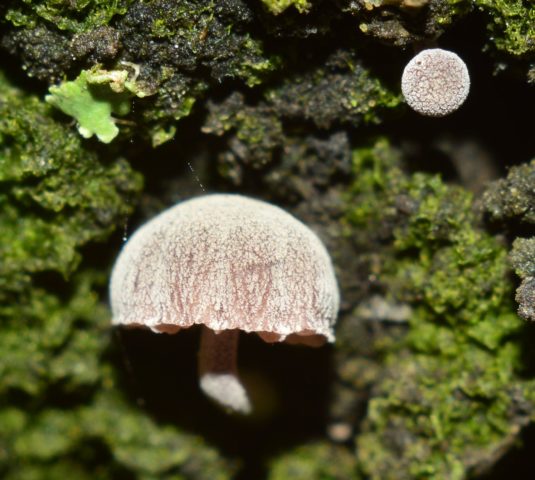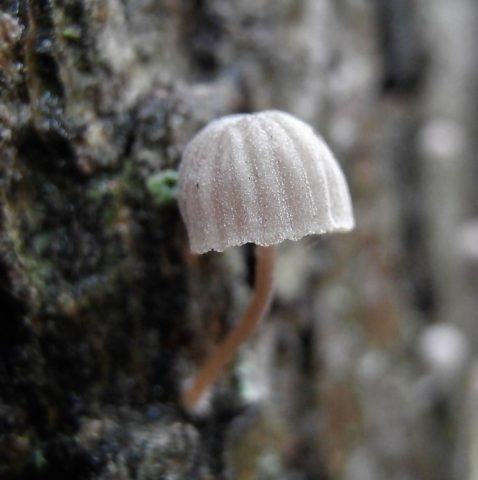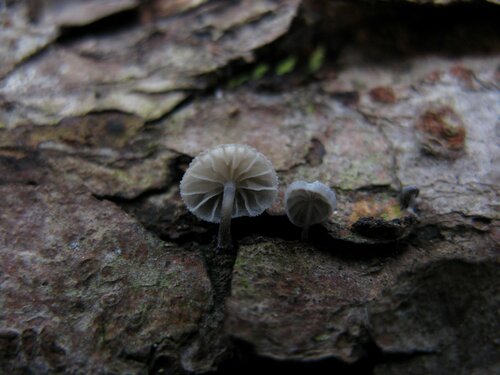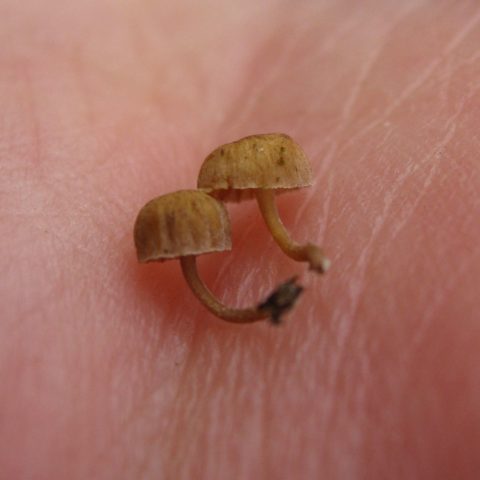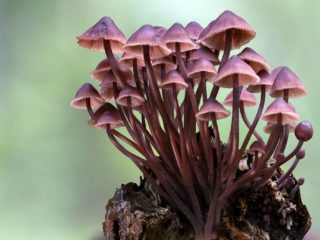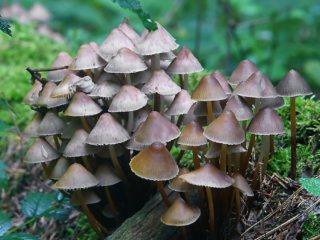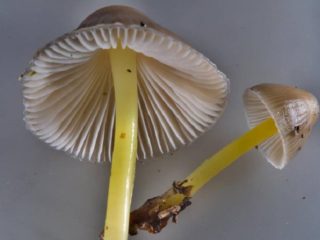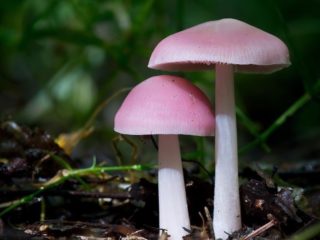Content
Melium mycena (Agaricus meliigena) is a mushroom from the Mycene family, of the order Agaric or Lamellar. The representative of the mushroom kingdom has not been fully studied, so there is no information on edibility.
What mycenae Meliaceae look like
The mushroom is small, the diameter of the cap does not exceed 8-10 mm. The surface is convex, parabolic. The apex may have a bulge or indentation. Due to the whitish coating, the cap seems to be covered with frost. The color ranges from reddish brown to pale brown with a touch of lilac or violet. Older specimens are deeper brown.
The plates are located very rarely (6-14 pcs.), Wide, with a narrowed finely toothed edge. The color of the plates in young specimens is whitish, acquiring beige-brown shades with age. The edges always appear lighter.
The leg is fragile, elongated, its size ranges from 4-20 mm. Thickness no more than 1 mm. Usually curved, rarely even. The color of the leg matches the color of the cap. The coating is frosty, large flakes can be observed. In older specimens, the plaque becomes thinner, disappears, the leg looks shiny. Residual whitish pubescence is visible only at the base.
The pulp is watery, white or creamy, a beige tint is possible. The structure is thin, translucent. There is no data on taste, there is no mushroom or specific smell.
Spores are smooth, spherical, white powder.
Where do mycenae grow
Meliaceae grow on the bark of deciduous trees, preferring a surface covered with moss. Most often found in oak forests. The main growing area is Europe and Asia.
The period of mass appearance of melium mycenes is the second decade of July. They bear fruit until late autumn (October-November). On warm and humid autumn days, you can observe the sudden numerous appearance of neem mushrooms not on the trees, but on the moss cushion around them. The phenomenon is seasonal, as soon as the humidity decreases, melia mycenae also disappear.
Is it possible to eat mycenae mellium
The mushroom has not been studied sufficiently, therefore there is no data on its edibility. It is generally accepted that the mushroom is not edible.
Existing twins
Melium mycene can be confused with similar species:
- Mycena cortical in some sources it is attributed to a different species, but has a great similarity, therefore it can be considered synonymous with mycene melieva. Melium is common in Europe, and crustal in North America. The species also has no nutritional value.
- Pseudo-cortical is found in oak forests and can grow together with melee mycene. Young specimens have clear differences: false corks are characterized by bluish or gray-blue shades, and neem - reddish-purple. Older specimens lose their original color, becoming brownish, so it is difficult to identify. Not edible.
- Mycenae juniper it is distinguished by a pale brown cap and is found not on oaks, but on junipers. The edibility is unknown.
Conclusion
Melium mycena is a representative of the mushroom kingdom that has no nutritional value. It is found in European and Asian countries, in some regions the species is listed in the Red Book.
